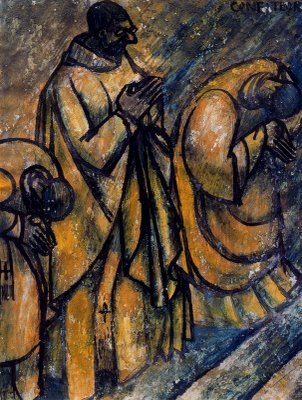
October 30
Saint Dominic would rise from the ground and give himself the discipline after the days prayers. He did this with an iron chain, saying, “Thy discipline has corrected me unto the end” [Ps. 17:36]. This is why the Order decreed, in memory of his example, that all the brethren should receive the discipline with wooden switches upon their shoulders as they were bowing down in worship and reciting the psalm “Miserere” or “De Profundis” after Compline on ferial days. This is performed for their own faults or for those of others whose alms they receive and rely upon. No matter how sinless a brother may be, he is not to desist from this holy example given by the blessed Saint Dominic.





